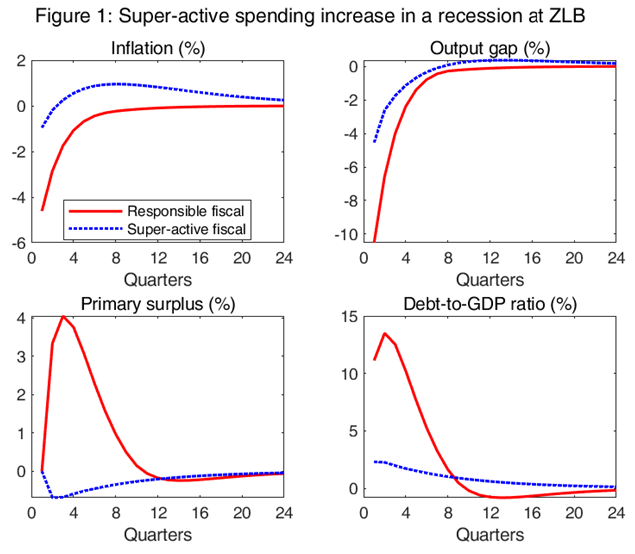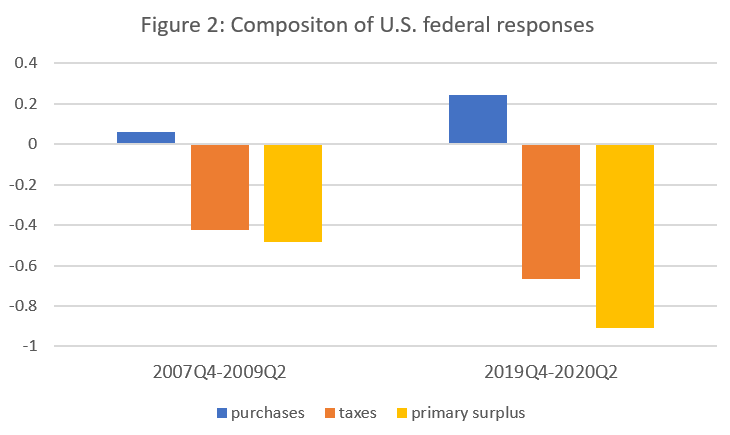References
Bianchi, Francesco, Renato Faccini, and Leonardo Melosi. 2020. “Monetary and Fiscal Policies in Times of Large Debt: Unity Is Strength.” NBER Working Paper 27112.
Billi, Roberto M., and Carl E. Walsh. 2022. “Seeming Irresponsible but Welfare Improving Fiscal Policy at the Lower Bound.” Sveriges Riksbank Working Paper No. 410.
Jacobson, Margaret M, Eric M Leeper, and Bruce Preston. 2019. “Recovery of 1933.” NBER Working Paper 25629.
Leeper, Eric M. 1991. “Equilibria under ‘Active’ and ‘Passive’ Monetary and Fiscal Policies.” Journal of Monetary Economics 27 (1): 129–47.
Leeper, Eric M., and Campbell Leith. 2016. “Understanding Inflation as a Joint Monetary-Fiscal Phenomeon.” In Handbook of Macroeconomics, edited by John B. Taylor and Harald Uhlig.
Sims, Christopher A. 2016. “Fiscal Policy, Monetary Policy and Central Bank Independence.” Federal Reserve Bank of Kansas City Jackson Hole Symposium, 1–17.






